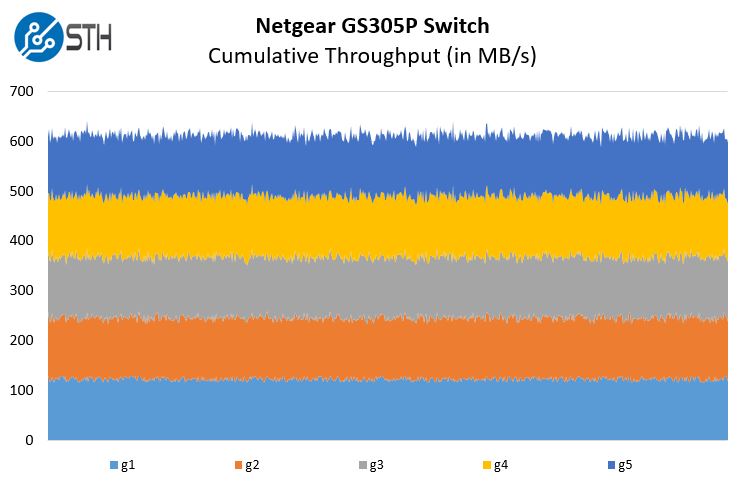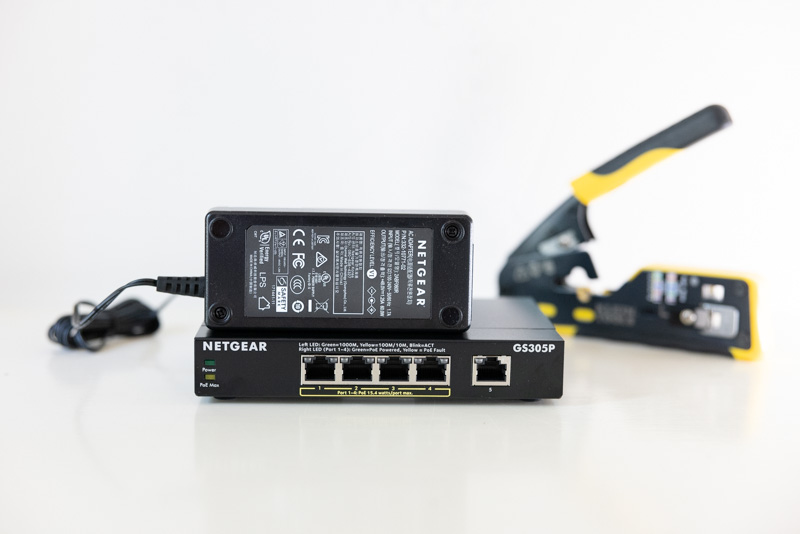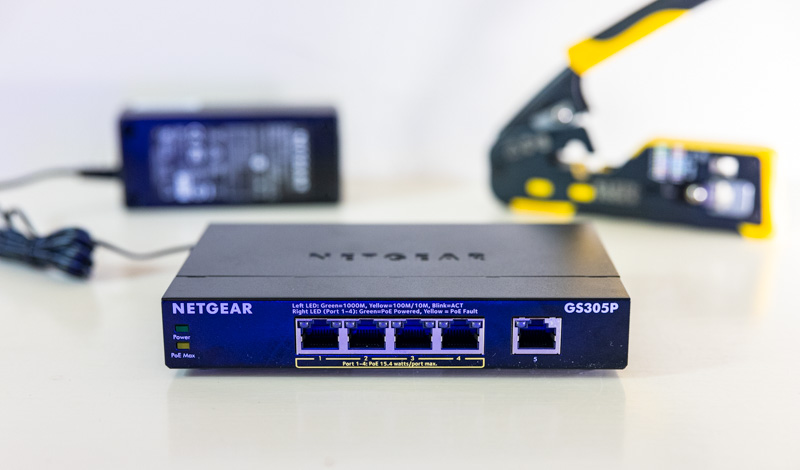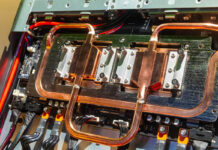Netgear GS305P Performance
The Netgear GS305P is a simple 5-port switch so we get performance that we would expect:

This type of switch is likely going to use sub-100Mbps IP cameras and phones so hitting over 100MBps provides plenty of headroom on the ports. Since this is a PoE not a PoE+ or PoE++ switch, it is not really the type of device one would expect to put high-throughput WiFi 6 APs on like the Netgear WAX630 WiFi 6 Access Point we featured recently. This is really just a low-end switch.
Next, we are going to take a look at power consumption and noise.
Netgear GS305P Power Consumption and Noise
When it comes to power consumption, we know this is not going to use much just given the specs. We have a 60W PSU and a 55W PoE budget. That means Netgear has around 5W set aside for the switch hardware aside from the PoE circuits. With nothing plugged in we were in the 1-2W range and using non-PoE we could not get to 4W passing traffic. Still, we are talking 1-4W so the majority of this switch’s power consumption is dedicated to the PoE function.

In terms of noise, this is a fanless design so it was silent in our testing. In our test unit, we did not hear any PSU whine either.
Final Words
Overall the Netgear GS305P 55W was fine. It worked as advertised with five 1GbE ports and four of them being PoE capable. The metal case is a nice touch as well.

In terms of pricing, we will leave an auto-updating affiliate Amazon affiliate banner above the final words that will show current pricing. We paid $50 for ours and sometimes they get to be less expensive. That is $12.50 per PoE port and $10/ 1GbE port which is on the higher-end.
As we saw on our TP-Link review, our sense on this one is that unless one simply needs low-end and cheap PoE, we probably would get the Netgear GS108PP 8-Port PoE+ switch over this unit. More WiFi 6 APs are requiring PoE+ as are some other higher-end devices. Having more ports often means fewer replacement cycles due to not having an extra port. This does save $30 or so, but it comes at a fairly large decrease in features. As a result, the decision between those really is simply budget.
Perhaps the shocker for us was that there are so many seemingly similar versions out there with V1 and V2 versions on the market. We ordered both the 63W PoE+ (V2) version of the GS305P but then there is also a 63W PoE+ GS305EP. We ordered that as well and reached out to Netgear for comment but we did not hear back by the time this piece went live. Given that we paid $5 more for the V1 variant, we cannot assign this a high score for value. Stay tuned as we test the other iterations.




A further factor is Amazon itself. There are lots of sellers offering both Vs of this product, and although AMZN appears to have separate ASINs for V1 & V2, it is reported that AMZN co-mingles stock from all sellers at the same warehouse location. I’d love to be mistaken about that.
So even if you insist on shipped-by-AMZN, you are relying on the stockers having double-checked that what the sellers shipped-in is V1 or V2 for the specific ASIN. And even if you buy from AMZN as seller, it might be some other seller’s stock. If AMZN is lax about getting frank counterfeits out of their store, it makes you wonder about the stewardship discipline for minor product revision currency.
I was like “who cares about amazon” but then for a $50 switch they’re selling a lot through amazon.
Other than the switch, what is the other item in every single photo?
Just curious….
@Pavel Rozalski – Looks like a Klein Tools VDV226-110 crimper.
I’d hope that it isn’t common enough to justify adding a new “review overview” category; but this one seems like a situation where a “vendor nonsense” category would be useful; and would be ~2 out of 10; since changing power budgets and PoE to PoE+ with only a nearly-silent change to ‘v2’ is so unhelpful as to be edging into actively hostile.
It’s pretty normal for consumer networking gear to make big hardware changes without changing model numbers; but usually that is done in areas that ruin the day of people looking for reliable OpenWRT compatibility(switching to a totally different SoC or radios or similar) but, mostly, don’t affect the limited set of specs they commit to in the documentation.
PoE to PoE+ as a near-silent revision, though, is just not forgivable.
System48 is correct on the crimper identification.
Also, the GS305P V2 is actually the GS305P-200NAS but on the box, it is only marked in one small location.
what is the LOCK on rear and how is it employed